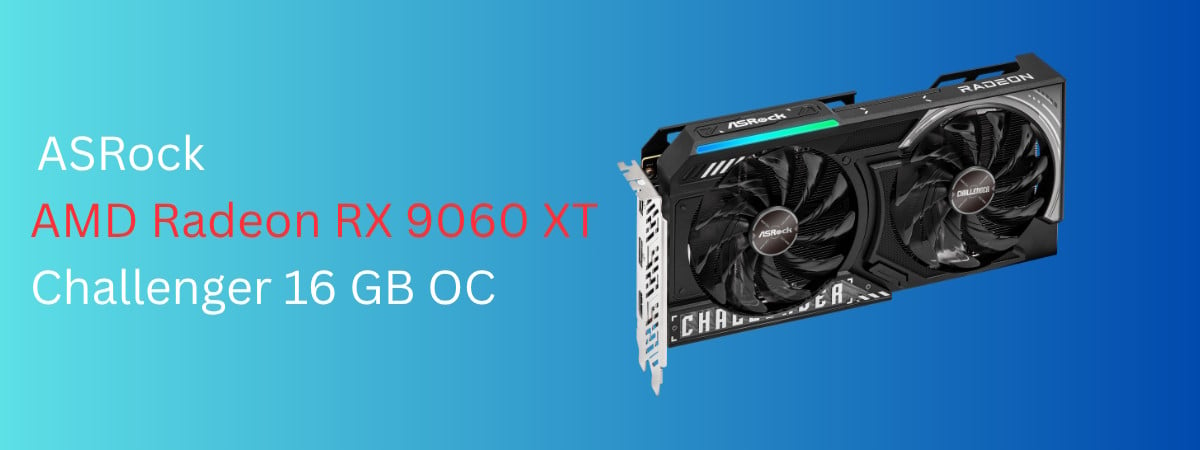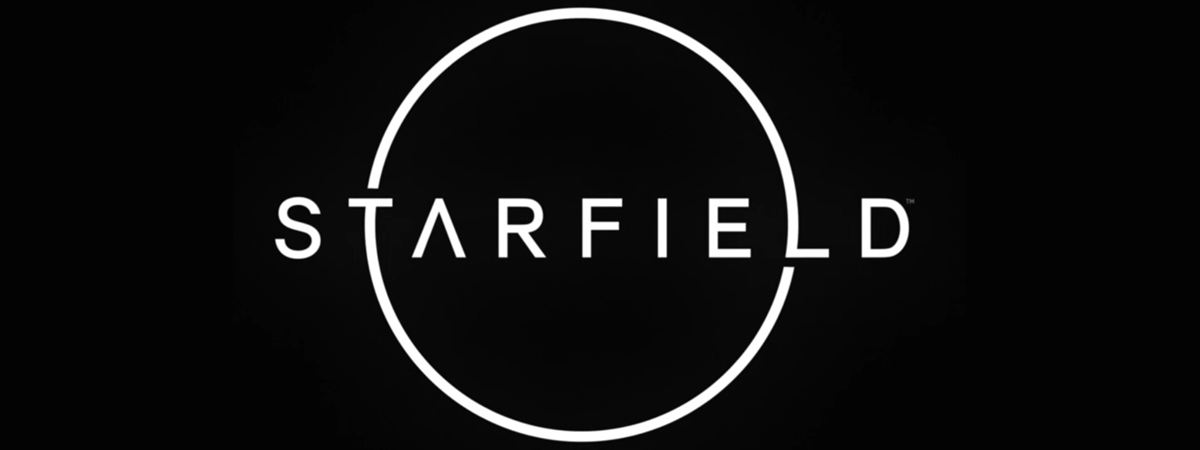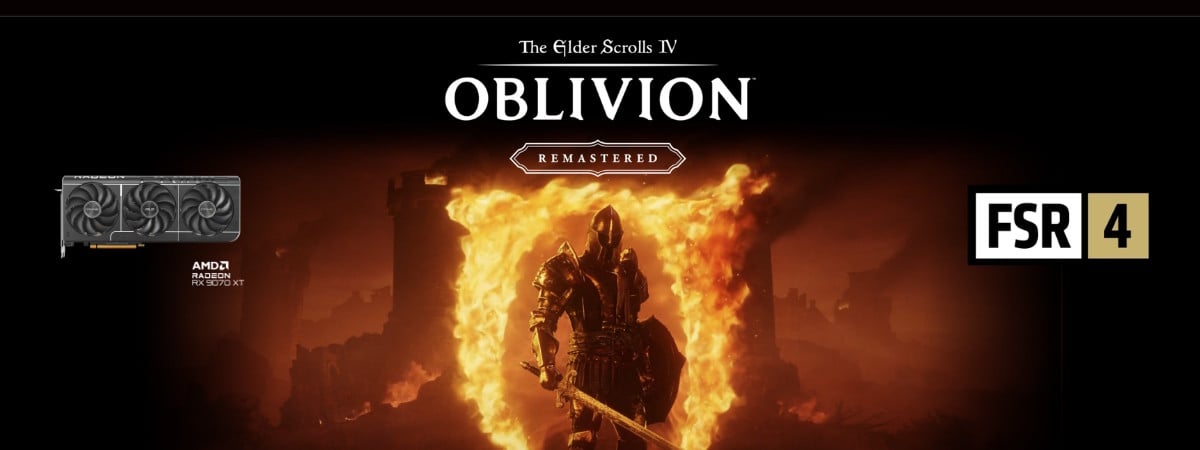
It’s been years since I first left the sewers of the Imperial City and stepped out into Cyrodiil’s open world. Back then, Oblivion felt massive and beautiful, even if shadows were just gray blankets, textures were mostly blurry patterns, and stutters were anything but occasional. Nowadays, thanks to a full remaster and much better graphics cards, the experience feels like something entirely new. I decided to revisit The Elder Scrolls IV: Oblivion Remastered on my PC, powered by the ASUS PRIME Radeon RX 9070 XT OC Edition. I was curious to see how well this modern GPU can handle a game rebuilt with high-resolution textures and ray tracing effects. Add AMD’s new FSR 4 upscaling technology, and I had high hopes for a smooth and impressive ride through one of the world’s best RPGs ever. It looked great, but let me show you exactly how it performed, especially during the early parts of the game, up to the gates of Kvatch:
Meet the ASUS PRIME AMD Radeon RX 9070 XT & the hardware powering my return to Cyrodiil
Here’s the system I used to explore this remastered version of Oblivion:
- CPU: AMD Ryzen 9 9900X
- RAM: 32 GB Kingston Fury Renegade DDR5-8000
- Motherboard: ASUS ProArt X870E-CREATOR WIFI
- Storage: 2 TB Kingston KC3000 PCIe 4.0 SSD
- Monitor: ASUS ROG Strix XG32UQ 4K 165Hz
The ASUS PRIME AMD Radeon RX 9070 XT is based on AMD’s RDNA 4 architecture and built on TSMC’s 4 nm manufacturing process. It features 16 GB of GDDR6 memory on a 256-bit bus, 64 MB of Infinity Cache, and hardware dedicated to ray tracing and AI-based rendering.
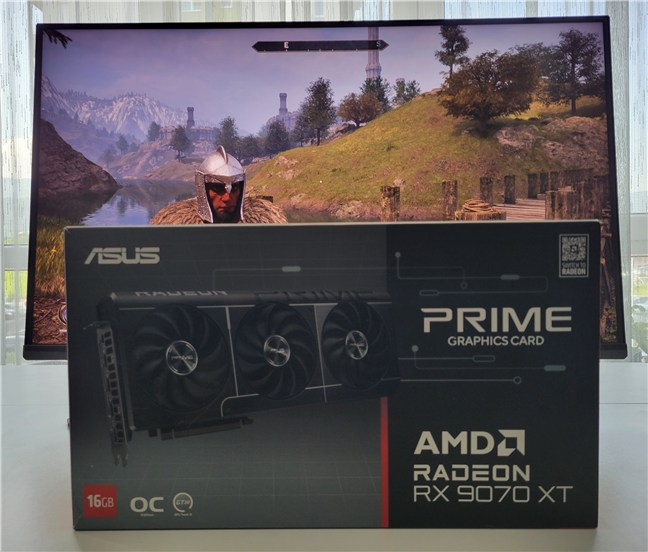
I've played Oblivion Remastered on an ASUS PRIME AMD Radeon RX 9070 XT
I previously reviewed this GPU and tested it in various modern titles. Its cooling system stayed quiet and efficient, and it handled 4K gaming without issue. If you want to look at its full benchmarking results, thermal behavior, and more in-depth analysis, you can check out my complete review for the ASUS PRIME AMD Radeon RX 9070 XT OC Edition.

The box of the ASUS PRIME Radeon RX 9070 XT graphics card
The GPU supports FidelityFX Super Resolution version 4, or FSR 4 in short, which is AMD’s latest upscaling technology, designed to help you get more performance out of your graphics card without noticeably affecting visual quality. It works by rendering frames at a lower resolution and then upscaling them using spatial and temporal data, combined with AI-based reconstruction. The end result is a game that runs faster but still looks like it’s being rendered at native resolution. FSR 4 builds on the earlier versions by improving temporal stability, reducing ghosting and flickering, and preserving sharpness and detail much better than before.
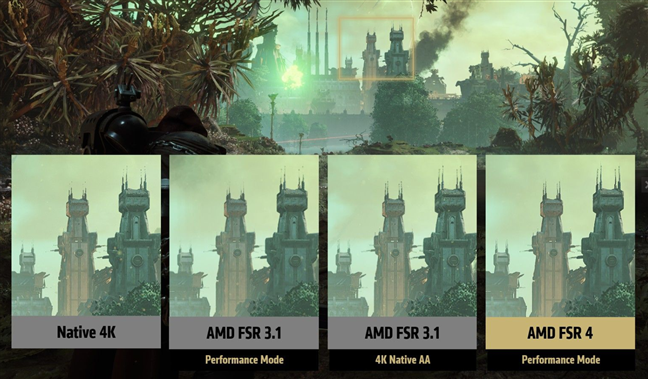
AMD FSR brings significant improvements over previous versions
Image source: AMD
In real life, FSR 4 lets you use higher resolutions and enable more advanced visual effects while, at the same time, avoiding performance dips. At 1440p and 4K resolutions, the difference should be evident. Even if the AMD Radeon RX 9070 XT is already a powerful graphics card, FSR 4 improves your experience further. It gives you headroom to enable things like ray tracing effects or ultra-quality shadows. In a game like Oblivion Remastered, where immersion relies so much on lighting, weather, and distant detail, this matters a lot.

AMD FSR 4 helps a great deal in terms of performance in Oblivion Remastered
Having said that, let me tell you a bit about the game before showing you the performance I got from the ASUS PRIME AMD Radeon RX 9070 XT:
Visual upgrades breathe new life into a story-rich world
The game opens the same way it always did: you start in a prison beneath the Imperial City, with Uriel Septim’s arrival.
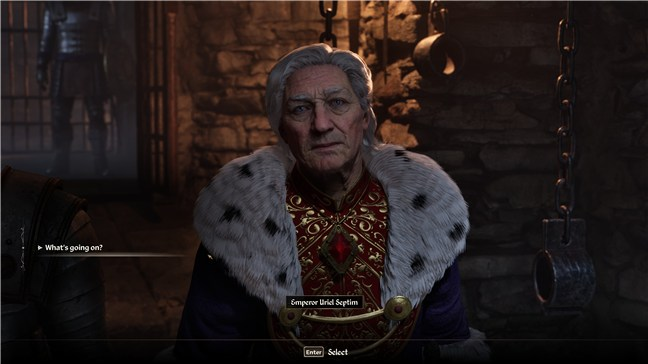
Meeting the Emperor in Oblivion Remastered
The remastered version looks entirely different than the one I remember from the old days. Visually, it really is night and day compared to the old game. Light rays reflect naturally off, shadows stretch realistically, and torchlight flames look authentic.
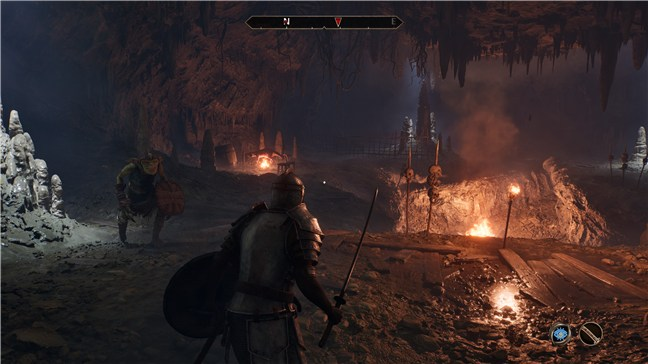
Lights and shadows look great
Stepping outside is still one of the best moments in any Elder Scrolls game. The moment I got out through the sewer exit, I was amazed. First of all, forests no longer appear to be made of flat (paper) trees. They cast intricate shadows, and light is filtered through the canopy based on the time of day. Fog fills the bottoms of the valleys in the morning and burns off under the midday sun.
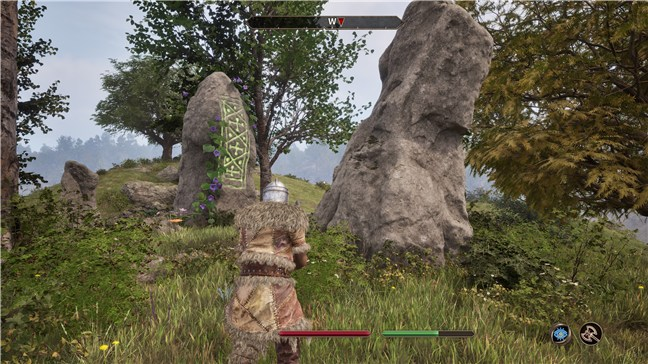
Getting out in the big unknown feels great
Villages and farms seem like they were just built and are full of life, while abandoned forts give off a vibe of decay, like they’ve stood there for centuries. You can see distant objects like creatures, walls, and mountain peaks from hilltops, long before they become relevant for your journey. This wasn’t possible in the original game, where the horizon was just a blurry thing far away, in the distance.
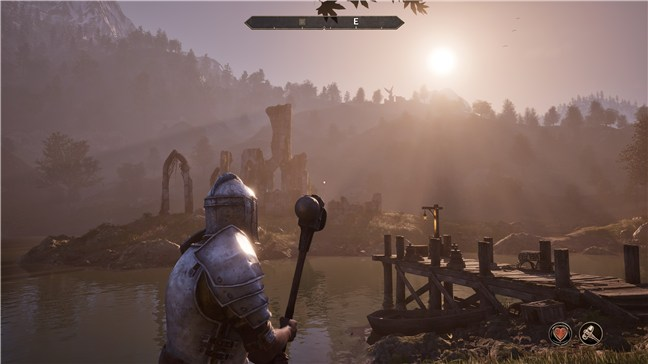
Oblivion Remastered is a treat when it comes to long-distance rendering
Reaching Kvatch was the first real test. The city is under siege, and the sky burns orange and red from the nearby Oblivion Gate. Light casts dynamic shadows on the battlefield, ash floats through the air, and tension fills not just every corner but also your lungs. With the improved lighting engine and higher-resolution textures, all this sense of nervousness and anxiety in waiting for the soon-to-come battles feels heavy.
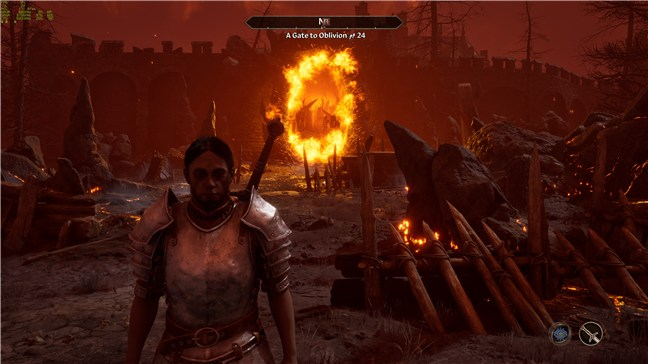
Intense areas require a powerful system, especially a potent GPU
I haven’t had time to go much further. Kvatch is where I’m pausing for now. I still need to finish God of War Ragnarök first, and I’ve already written about that experience in a separate article, which you can find here: FSR 4 performance in God of War Ragnarök with ASUS PRIME AMD Radeon RX 9070 XT. Yet, before I return to Midgard, here’s how the remastered Oblivion performed on my system with the ASUS PRIME Radeon RX 9070 XT:
Oblivion Remastered performance with and without FSR 4 on the ASUS PRIME AMD Radeon RX 9070 XT
As I’ve said earlier, this remaster is more than just a simple visual upgrade. It includes high-resolution textures, volumetric fog, ray-traced lighting and shadows, better draw distances, and denser vegetation. It’s much more demanding than the original game, making it perfect for testing the AMD Radeon RX 9070 XT and AMD’s FSR 4 technology.
At 1080p resolution, the AMD Radeon RX 9070 XT had no trouble at all. The game ran smoothly, even in cities or battles. The jump from 71 FPS to 94 FPS with FSR 4 represents a 32% performance increase. While it was already running well, this extra boost helped keep frame times consistent, especially during intense scenes.
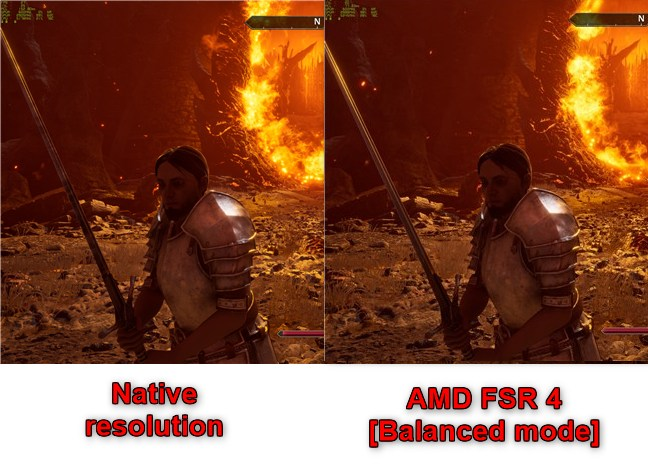
Oblivion Remastered in native resolution versus AMD FSR 4 (Balanced mode)
At 1440p resolution, the impact of FSR 4 was even more noticeable. The native frame rate averaged 54 FPS, which was fine in most situations. With FSR 4 enabled, the game reached 82 FPS, an improvement of about 52%. This made a big difference during demanding sequences with fire effects, spell particles, or nighttime lighting, where everything felt smoother and more responsive.
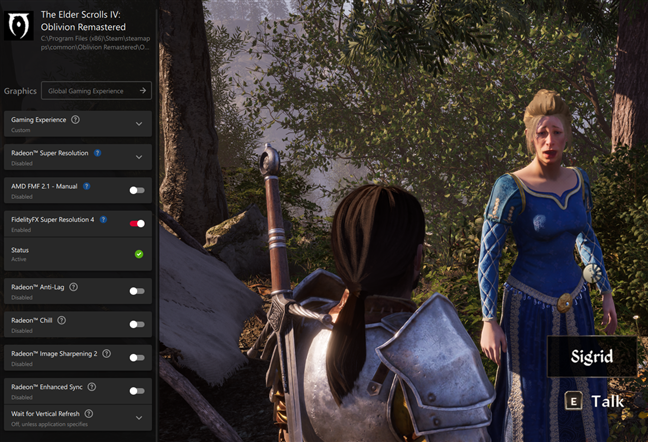
Enabling AMD FSR 4 in Oblivion Remastered
At 4K resolution, FSR 4 made the game go from barely playable to, in the lack of another word, enjoyable. Native rendering averaged just 26 FPS, but enabling FSR 4 more than doubled the frame rate to 55 FPS, delivering a 111% increase. That clearly provides a more positive gaming experience. The image quality remained high, with crisp and detailed edges, but no visible artifacts even during fast motion.
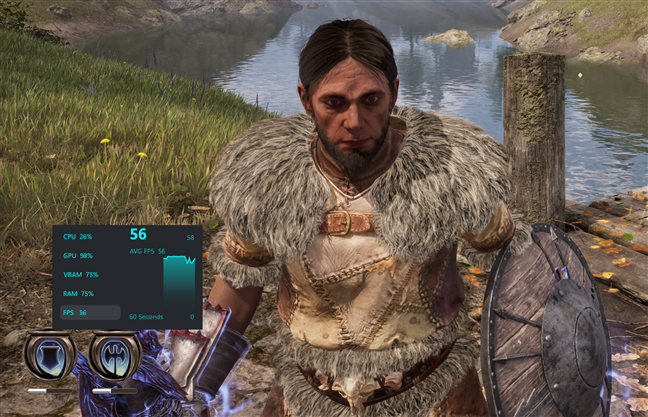
Playing Oblivion Remastered in 4K with AMD FSR 4
If you like charts, here’s how the game performed on my computer at the three different resolutions mentioned (4K, 1440p, 1080p), both with and without FSR 4 in Balanced mode:
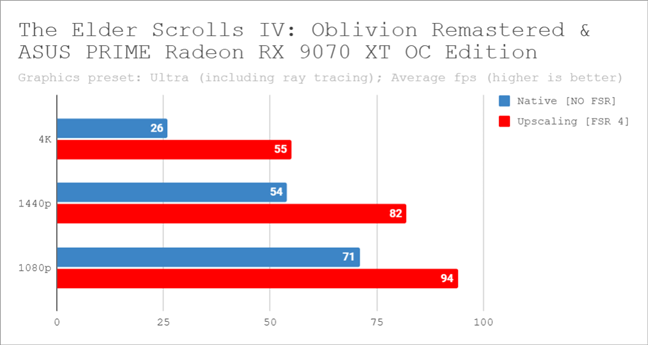
Benchmark results with and without AMD FSR 4 in Oblivion Remastered, on an AMD Radeon RX 9070 XT
In the end, I can conclude that AMD’s FSR 4 isn’t just helpful. It is actually essential at higher resolutions. While the AMD Radeon RX 9070 XT has more than enough power for 1080p gaming, scaling up to 1440p and especially 4K really showcases how much additional performance FSR 4 can offer.
Oblivion Remastered is better than I hoped, and AMD Radeon RX 9070 XT handles it beautifully
My experience in Oblivion Remastered was very different from what I remembered. The world is the same in structure, but everything looks smoother, more detailed, and more alive. The ASUS PRIME AMD Radeon RX 9070 XT is a great fit for this remaster, handling it quite well, even in the more demanding scenes. FSR 4 boosts performance while still preserving excellent image quality, and makes the game run well even at higher resolutions like 1440p or 4K. If you're planning to revisit Oblivion, this is the way to do it.


 23.06.2025
23.06.2025 